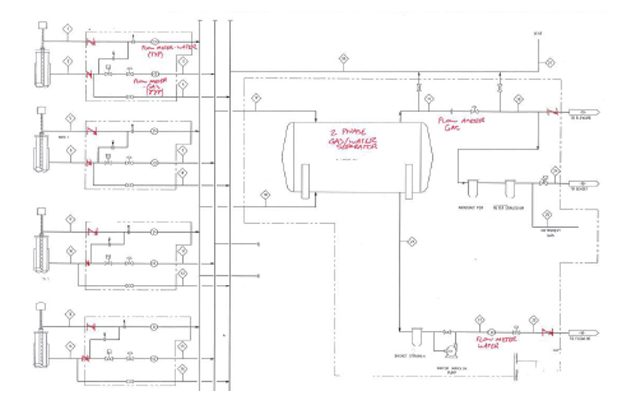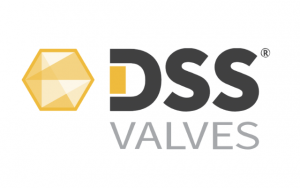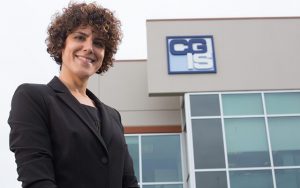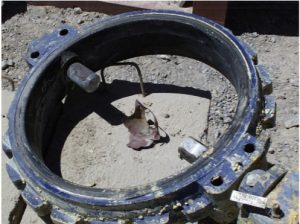Author: Pascal Hatzipalousis, CGIS
There are three companies in Australia that currently extract coal seam gas (CSG) and send it through a purification process to be exported for liquefied natural gas (LNG) processing. These companies are QCLNG (Queensland Gas Company), APLNG (a joint venture between Origin Energy, Sinopec and Conoco Phillips), and GLNG (a joint venture between Santos, Petronas, Total and Kogas). All three operations use the same process to extract the coal seam gas from the ground and send it to a common LNG processing plant for purification.
These companies extract coal seam gas by pumping ground water into the well to push the coal seam gas to the surface. This process is done with pressure through a wellhead and moves the coal seam gas into the first stage of separation (see Figure 1 above). The coal seam gas and water mixture flows out through the wellhead into a skid arrangement and wellhead manifold. It then enters the first stage of separation through a two-phase gas / water separator. This separator is essentially a gas scrubber and skid formation which removes 99% of the moisture and solid particles from the gas.
Per the diagram shown in Figure 1 above, both the APLNG and GLNG operations utilize a number of wellheads that feed into one manifold and a two-phase gas / water separator. The other company, QCLNG, utilizes one gas / water separator for each wellhead to ensure maximum total up-time in case one separator stops producing.
These Australian companies are responsible to maintain thousands of wellheads, and every wellhead skid has two check valves (each gas and water flow line from the separator also has a check valve). The check valves specified for all three CSG-LNG operations are wafer duo check valves, which are the most common type of check valves supplied in the world today. It is quite common for these check valves to fail, at which point, these wafer duo check valves become unable to prevent back flow to the wellhead and separator.
This check valve failure has a negative impact on components upstream and downstream; especially in the case where dirty or corrosive media can cause significant erosion and corrosion issues to the wellhead skid work and gas separator, or to the valve itself.
 Read more about the Coal Gas Seam extraction process, the problems with duo wafer check valves, and the valve solutions that exist to significantly reduce well asset costs.
Read more about the Coal Gas Seam extraction process, the problems with duo wafer check valves, and the valve solutions that exist to significantly reduce well asset costs.





Comments